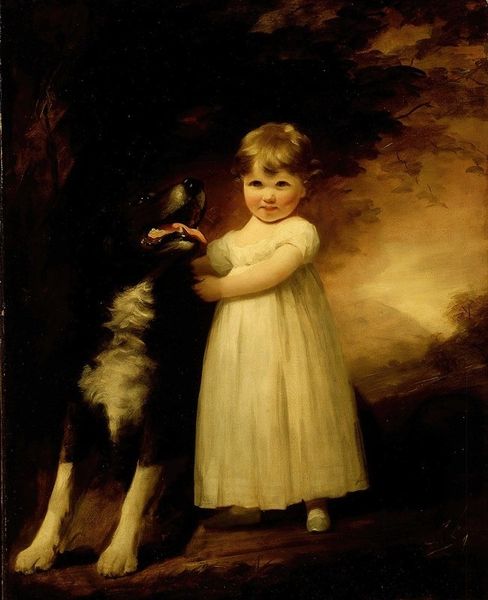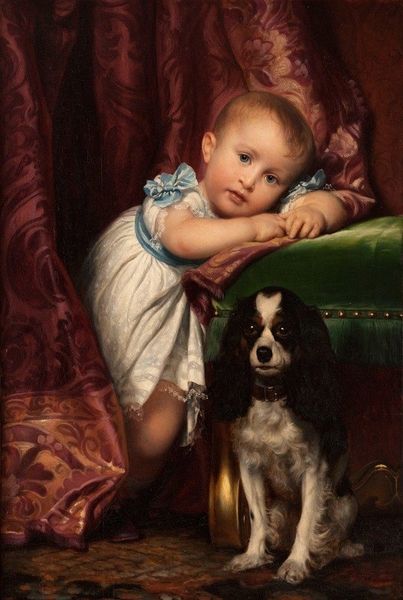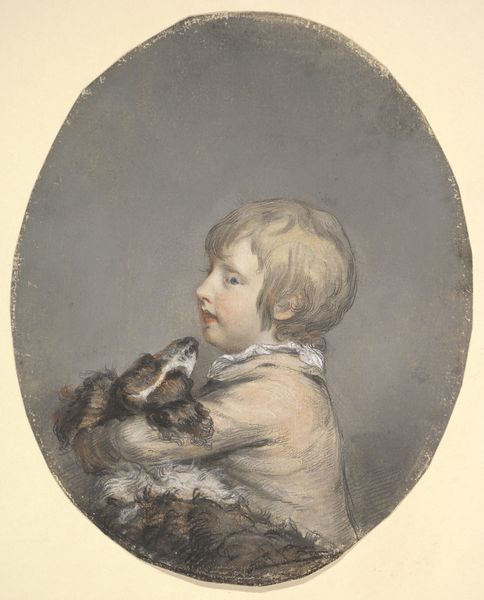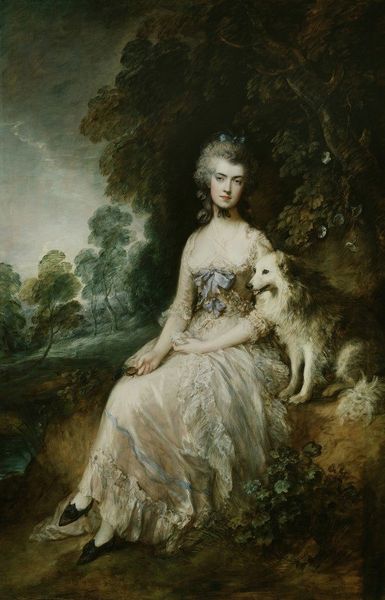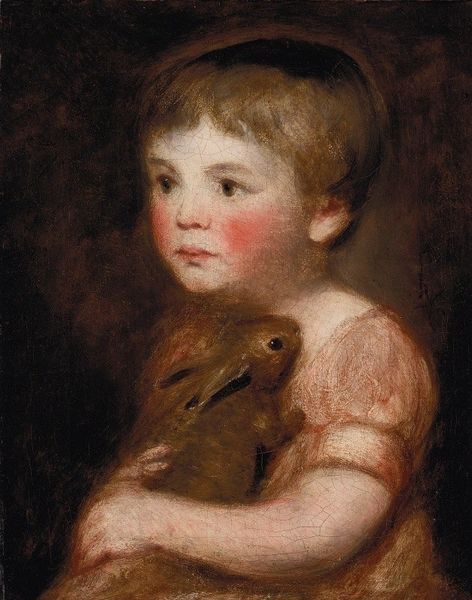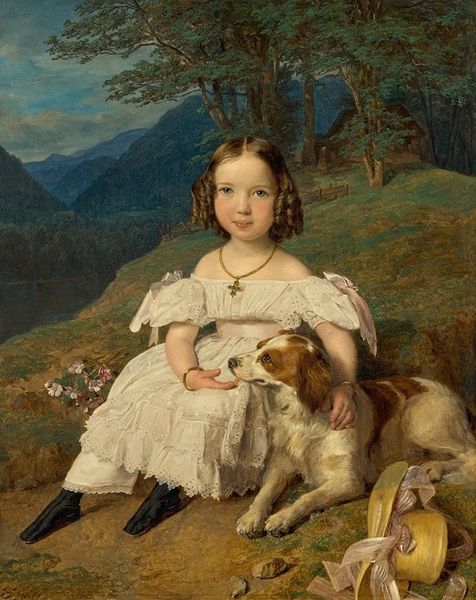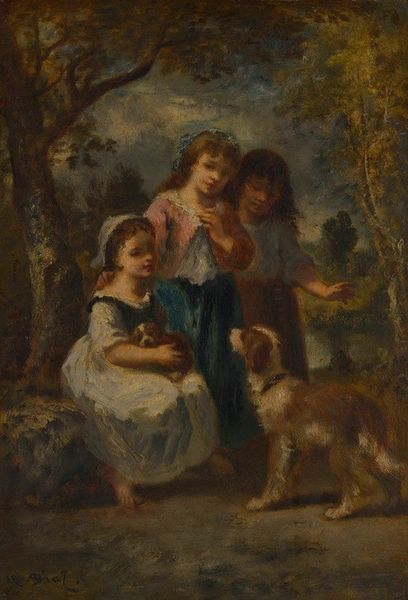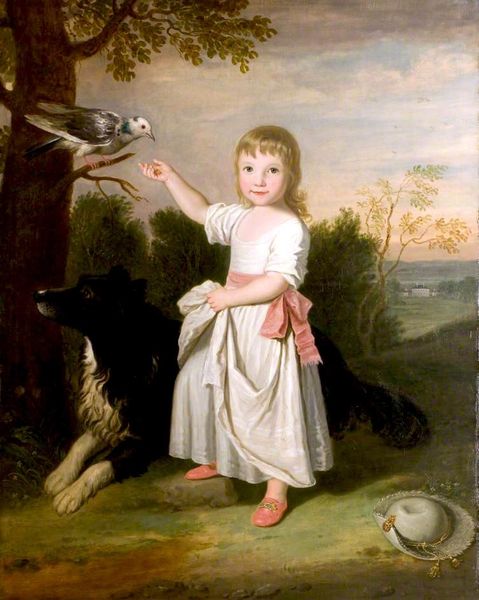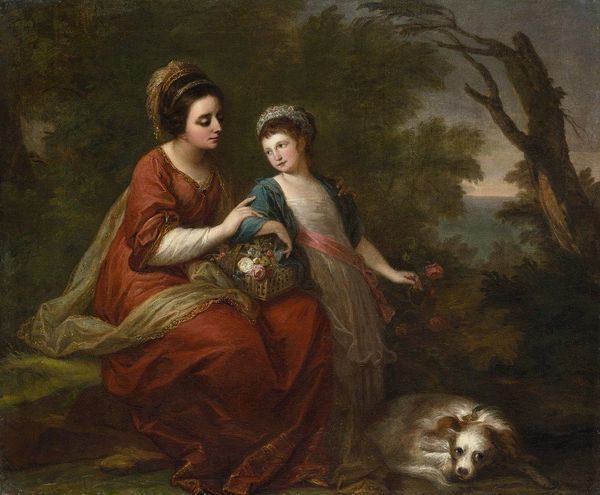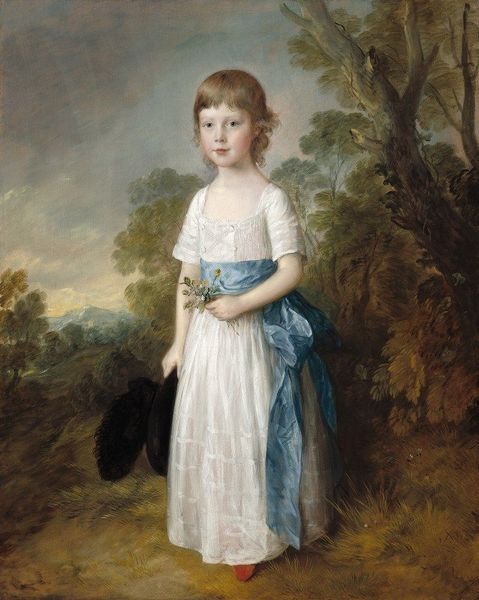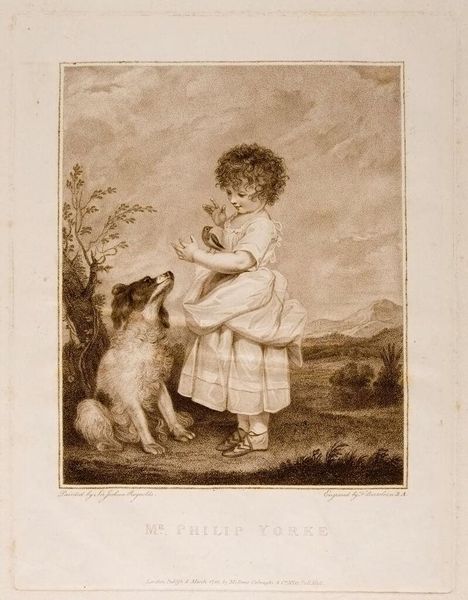
Copyright: Public Domain: Artvee
Editor: This is "Miss Jane Bowles," painted by Joshua Reynolds around 1775, using oil paint. There's something incredibly sweet about it; it feels sentimental and tender. How do you interpret this work? Curator: Notice how the seemingly straightforward portrait also carries layers of symbolic meaning? Children with animals were standard fare for Reynolds and his contemporaries; he draws from a tradition linking innocence and purity with the animal kingdom that runs deep in Western culture. But, is it just that? Editor: So, it's about innocence. Is it more profound than a simple depiction of affection? Curator: I think the symbolism goes further. Consider the carefully staged natural setting; the darkening woods contrasting with the clearing that frames the child’s head, perhaps signifying her potential future and protected upbringing? What is lost from one age and found in the next? And the dog itself - its protective posture may indicate both domestic tranquility but also status - an expensive and loyal family member? Editor: It's fascinating how one image can speak volumes about societal values. Reynolds is portraying so much more than a child with her dog. Curator: Indeed! Look at the symbolism carried within something as 'simple' as an animal portrait and consider how those codes change over time, it's less about her as an individual and more about what she, with her dog, signify. Does it spark thoughts about modern portraiture, or even advertising images using similar symbolism today? Editor: Definitely! Reflecting on this, it's clear how much these images act as a kind of visual record of societal ideals. Thanks for unveiling these different aspects. Curator: My pleasure. It reminds us that artworks act as a powerful reflection and reinforcement of cultural memory and the symbolic weight it carries.
Comments
No comments
Be the first to comment and join the conversation on the ultimate creative platform.
